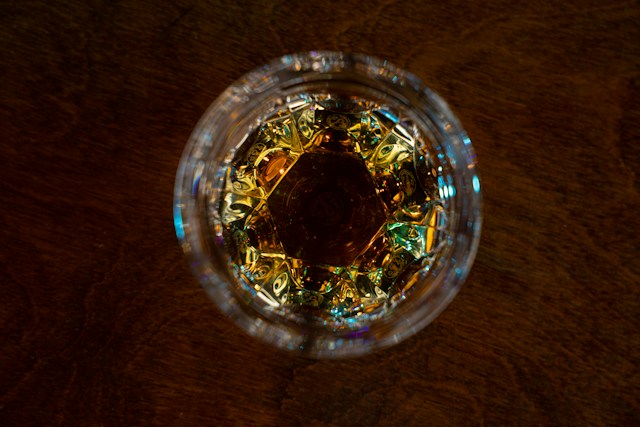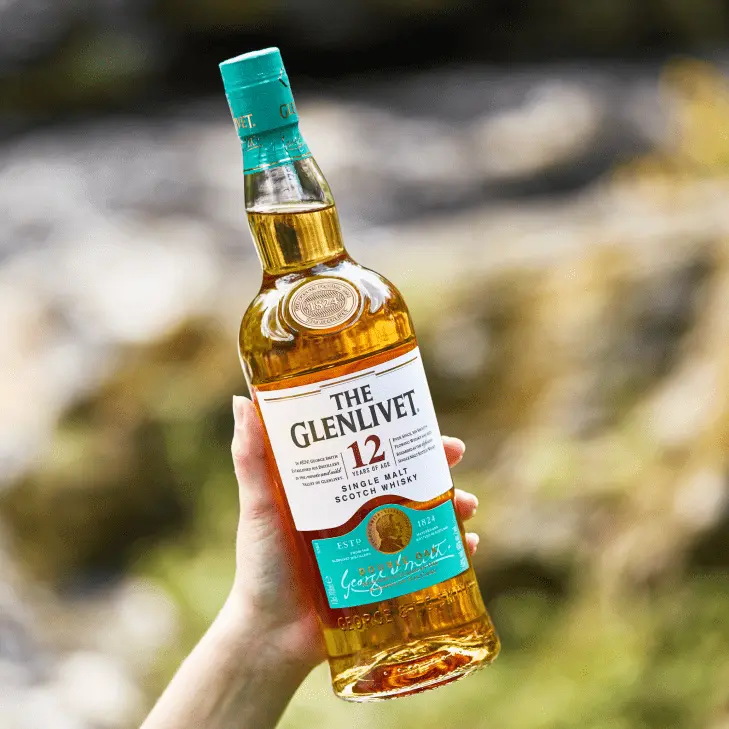
Single malt whiskey is a type of whiskey that is made from 100% malted barley and is produced by a single distillery. It is known for its rich and complex flavors, which are a result of the unique combination of ingredients and the distilling process. While some people enjoy drinking single malt whiskey neat, there are several ways to enhance the drinking experience.
Table of Contents
Understanding Single Malt Whiskey
Definition and Origin
Single malt whiskey is a type of whiskey that is made from malted barley, water, and yeast. It is produced by a single distillery and is not blended with any other whiskies. The term “single malt” refers to the fact that the whiskey is made from a single type of malted barley, which is sourced from a single distillery.
Single malt whiskey originated in Scotland, where it has been produced for centuries. The first recorded mention of whiskey in Scotland was in 1494, and by the early 16th century, whiskey was being produced throughout the country. The first single malt whiskey was produced in the early 19th century, and since then, it has become one of Scotland’s most famous exports.
Types and Regions
There are five main regions in Scotland where single malt whiskey is produced: the Highlands, the Lowlands, Speyside, Islay, and Campbeltown. Each region produces whiskey with its own unique characteristics and flavors.
Characteristics and Flavors
Single malt whiskey can have a wide range of flavors, depending on how it is produced and where it comes from. Some common characteristics of single malt whiskey include a smooth, rich flavor, a deep amber color, and a slightly sweet aroma.
The flavor of single malt whiskey can be influenced by a variety of factors, including the type of barley used, the water source, and the type of cask used for aging. Some common flavors found in single malt whiskey include vanilla, caramel, honey, and oak.
 photo credit: www.theglenlivet.com
photo credit: www.theglenlivet.com
Preparation for Tasting
Before drinking a single malt whiskey, it is important to prepare for the tasting experience. This involves setting the scene, choosing the right glassware, and serving the whiskey at the appropriate temperature.
Setting the Scene
To fully appreciate the flavors and aromas of a single malt whiskey, it is important to create the right environment. This means finding a quiet, comfortable space with minimal distractions. Ideally, the room should be well-lit and free from any strong odors or perfumes.
Glassware Selection
The choice of glassware can have a significant impact on the tasting experience. A tulip-shaped glass with a narrow opening is often recommended for single malt whiskey. This shape helps to concentrate the aromas and direct them towards the nose. Additionally, a stemmed glass can help to prevent the whiskey from warming up too quickly.
Serving Temperature
The temperature at which a single malt whiskey is served can greatly affect its flavor profile. It is generally recommended to serve the whiskey at room temperature or slightly below. If the whiskey is too warm, it can become overly harsh and lose some of its complexity. Conversely, if the whiskey is too cold, it can become overly muted and lose some of its nuances.
The Tasting Process
Tasting single malt whiskey is an art that requires patience, attention to detail, and a willingness to experiment. Here are the steps to follow to get the most out of your whiskey-tasting experience.
Observing Color and Texture
The first step in the tasting process is to observe the color and texture of the whiskey. Hold the glass up to the light and note the color. Single malt whiskeys can range from pale straw to deep amber, depending on factors such as the type of cask used for aging and the length of time the whiskey has been aged.
Next, swirl the whiskey in the glass and observe the texture. Does it appear thin and watery, or thick and syrupy? The texture can give you clues about the age and quality of the whiskey.
Nosing for Aromas
The next step is to nose the whiskey for aromas. Take a deep breath and note the scents that you detect. Single malt whiskeys can have a wide range of aromas, from fruity and floral to smoky and earthy.
To get the most out of your nosing experience, try holding the glass at different angles and distances from your nose. You may also want to add a drop or two of water to the whiskey to help release the aromas.
The Art of Tasting
Once you’ve observed the color and texture and nosed the whiskey for aromas, it’s time to taste it. Take a small sip and let it roll around your tongue, noting the flavors that you detect. Single malt whiskeys can have a complex range of flavors, including vanilla, caramel, spice, and smoke.
To get the most out of your tasting experience, try taking several small sips and holding the whiskey in your mouth for a few seconds before swallowing. You may also want to experiment with adding a drop or two of water to the whiskey to help release the flavors.
Savoring the Finish
The final step in the tasting process is to savor the finish. Note how long the flavors and aromas linger in your mouth after you’ve swallowed the whiskey. Single malt whiskeys can have a long, smooth finish, or a short, sharp one.
To get the most out of your finish experience, try taking a few deep breaths after you’ve swallowed the whiskey to help release the flavors and aromas. You may also want to experiment with different food pairings to see how they affect the finish.
Drinking Etiquette
When it comes to drinking single malt whiskey, there are certain rules and etiquette that should be followed to ensure a proper drinking experience. Here are some guidelines to follow:
Neat vs. Water vs. Ice
The first decision to make when drinking single malt whiskey is whether to drink it neat, with water, or with ice. Drinking it neat means drinking it straight out of the bottle without any dilution. Adding water can help to open up the flavors and aromas of the whiskey and make it more palatable. Adding ice can also help to dilute the whiskey and make it easier to drink, but it can also mask the flavors.
Drinking Rituals
There are certain drinking rituals that are associated with drinking single malt whiskey. For example, it is customary to toast before taking the first sip. It is also important to hold the glass by the stem or base to avoid warming the whiskey with your hands. When taking a sip, it is recommended to hold the whiskey in your mouth for a few seconds to fully appreciate the flavors.
Responsible Consumption
Finally, it is important to practice responsible consumption when drinking single malt whiskey. This means drinking in moderation and knowing your limits. It is also important to never drink and drive and to always have a designated driver or alternative transportation.
Frequently Asked Questions
What is the proper glassware for enjoying single malt whiskey?
The proper glassware for enjoying single malt whiskey is a tulip-shaped glass. While a rocks glass may work well for a whiskey dram, a tulip-shaped glass is recommended by Scotch aficionados as it allows the whiskey’s aromas to be concentrated and the flavors to be fully appreciated. A copita nosing glass or a Glencairn glass are also good options.
Is it better to drink single malt whiskey neat or with water?
Whether to drink single malt whiskey neat or with water is a matter of personal preference. Drinking it neat allows you to fully appreciate the whiskey’s flavors and aromas, while adding a small amount of water can help to open up the whiskey and bring out its more subtle nuances.
Can you mix single malt whiskey, and if so, with what?
Mixing single malt whiskey is generally not recommended, as it can mask the whiskey’s unique flavors and aromas. However, some people enjoy adding a splash of water or a single ice cube to their whiskey. Mixing it with other beverages, such as soda or juice, is generally not recommended.
What temperature should single malt whiskey be served at?
Single malt whiskey should be served at room temperature or slightly below, around 60–65 degrees Fahrenheit. Serving it too cold can dull the whiskey’s flavors and aromas, while serving it too warm can make it taste harsh and overpowering.
How do you properly store single malt whiskey to preserve its flavor?
To properly store single malt whiskey and preserve its flavor, it should be kept in a cool, dark place, away from direct sunlight and heat sources. The bottle should be kept upright and tightly sealed to prevent air from entering, which can cause the whiskey to oxidize and lose its flavor over time.
Conclusion
Drinking single malt whiskey is a personal experience that should be enjoyed at a leisurely pace. It is important to choose the right glassware, serve the whiskey at the correct temperature, and take the time to appreciate the aroma and flavor of the whiskey.
Remember to drink responsibly and in moderation. Single malt whiskey can be enjoyed as a special treat or on special occasions, but it should not be consumed excessively. With the right glassware, temperature, and appreciation for the whiskey, anyone can enjoy the rich and complex flavors of single malt whiskey.
Related Posts
If you’re interested in exploring more about single malt whiskey, The Whisky Lady has a few articles that might pique your interest. Here are a few titles and descriptions of related posts:
- Another gem found on my journey through the wonderful world of World Whisky: This post takes a look at a rare single malt from Sweden, which has been aged for over 20 years. The Whisky Lady provides detailed tasting notes and shares her thoughts on this unique whiskey.
- ST PATRICK’S DAY SPECIAL : A WHISKEY SOUNDTRACK: This post is a celebration of all things Irish whiskey. The Whisky Lady shares a playlist of songs to enjoy while sipping on your favorite Irish whiskey, and provides recommendations for some of the best Irish whiskeys to try.
- Straight from Finland: Discover The Kyro Distillery Company: This post takes a look at a unique Finnish whiskey made from 100% malted rye. The Whisky Lady provides detailed tasting notes and shares her thoughts on this unusual whiskey.
- Exploring Italian Whisky with PUNI Distillery: This post explores the world of Italian whiskey, with a focus on the PUNI Distillery. The Whisky Lady provides detailed tasting notes and shares her thoughts on this emerging category of whiskey.
- French Whisky Black Mountain to experience sea maturation: This post takes a look at a unique French whiskey that is being aged at sea. The Whisky Lady provides detailed tasting notes and shares her thoughts on this innovative approach to whiskey aging.



